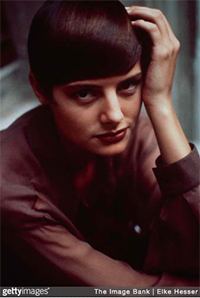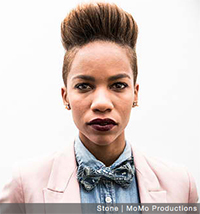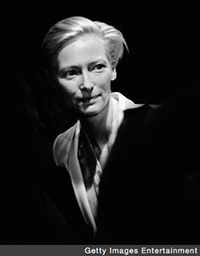By Pam Grossman, director, visual trends, Getty Images
 After analyzing search, download and usage data from millions of images, Pam Grossman discusses the visual trend demonstrated by portraiture bordering gender and aesthetic expectation.
After analyzing search, download and usage data from millions of images, Pam Grossman discusses the visual trend demonstrated by portraiture bordering gender and aesthetic expectation.
Whether one ascribes to the theory that gender is a biological principle or a learned performance, this much is clear: Society’s understanding of masculinity and femininity is becoming increasingly fluid.
While our world rethinks what it means to be male or female, the visual portrayal of men, women, parenthood, work and home is shifting. This is a fascinating development, with imagery at its center, in which a photograph has the ability to connect with someone because it feels true.
After analyzing search, download and usage data from millions of images, we’ve decided to call this visual trend “Genderblend,” demonstrated by portraiture bordering gender and aesthetic expectation.
 The most apparent shifts in the gender narrative have been happening for half a century, as the age of the assumed male breadwinner gave way to two-parent incomes and sisters “doin’ it for themselves.” This past year alone, we watched Max Schireson, the male CEO of MongoDB step down to spend more time with his family, NY Mets baseball player Daniel Murphy chose to take some very public paternity leave and the BBC Trust appoint Rona Fairhead as its first female chair.
The most apparent shifts in the gender narrative have been happening for half a century, as the age of the assumed male breadwinner gave way to two-parent incomes and sisters “doin’ it for themselves.” This past year alone, we watched Max Schireson, the male CEO of MongoDB step down to spend more time with his family, NY Mets baseball player Daniel Murphy chose to take some very public paternity leave and the BBC Trust appoint Rona Fairhead as its first female chair.
Stereotypes are being dismantled in childhood as well, as the “Let Toys Be Toys” movement gains traction, encouraging manufacturers and publishers to classify items by type rather than gender. We’ve entered a world of “Bronies” (that’s boys who play with My Little Pony) and Lego sets that now feature female paleontologists. We’re teaching our kids that anyone can grow up to be the hero, as films with strong female protagonists like “Maleficent” and “The Hunger Games” series break box office records, and girls learn that belief in oneself is more important than bagging Prince Charming.
 The universe of fashion and entertainment periodically blurs gender lines, inverting expectations and igniting imaginations. David Bowie and Tilda Swinton continue to be lauded icons of androgyny, and Balenciaga’s recent campaign showing supermodel Gisele with shorn, slicked-back hair and a handsome wardrobe follows suit – pun intended.
The universe of fashion and entertainment periodically blurs gender lines, inverting expectations and igniting imaginations. David Bowie and Tilda Swinton continue to be lauded icons of androgyny, and Balenciaga’s recent campaign showing supermodel Gisele with shorn, slicked-back hair and a handsome wardrobe follows suit – pun intended.
Selfridges department store is about to introduce Agender, a three-floor gender-neutral shopping experience. Meanwhile, the gender-vescent cult film “Hedwig and the Angry Inch” is enjoying second life as a hit show on Broadway, winning multiple Tony awards. And we would be remiss without mentioning the bearded, bedazzled gown-wearing drag singer, Conchita Wurst, who captured our collective heart when s/he won Eurovision last year with “Rise Like a Phoenix.”
 We’re also witnessing a new chapter in the Civil Rights story, with the transgender community becoming far more vocal about being seen and treated equitably. Laverne Cox became the first transgender woman to be featured on the cover of TIME Magazine and to glean an Emmy nomination for her starring role in ‘Orange is the New Black.’ Geeno Rocero gave a moving TED Talk about her career as a transgender model and became a spokesperson for Marriott’s LGBT-friendly “Love Travels” campaign, and the show, “Transparent,” has gotten raves – and Golden Globes – for Jeffrey Tambor’s sensitive portrayal of a man transitioning to his true identity as a woman.
We’re also witnessing a new chapter in the Civil Rights story, with the transgender community becoming far more vocal about being seen and treated equitably. Laverne Cox became the first transgender woman to be featured on the cover of TIME Magazine and to glean an Emmy nomination for her starring role in ‘Orange is the New Black.’ Geeno Rocero gave a moving TED Talk about her career as a transgender model and became a spokesperson for Marriott’s LGBT-friendly “Love Travels” campaign, and the show, “Transparent,” has gotten raves – and Golden Globes – for Jeffrey Tambor’s sensitive portrayal of a man transitioning to his true identity as a woman.
We’re traversing a new frontier of selfhood, complete with new ground to break. The boundaries of gender are blending and increasing in complexity, and both the results and the images illustrating them are simply beautiful.
Learn more about this trend in our video:








